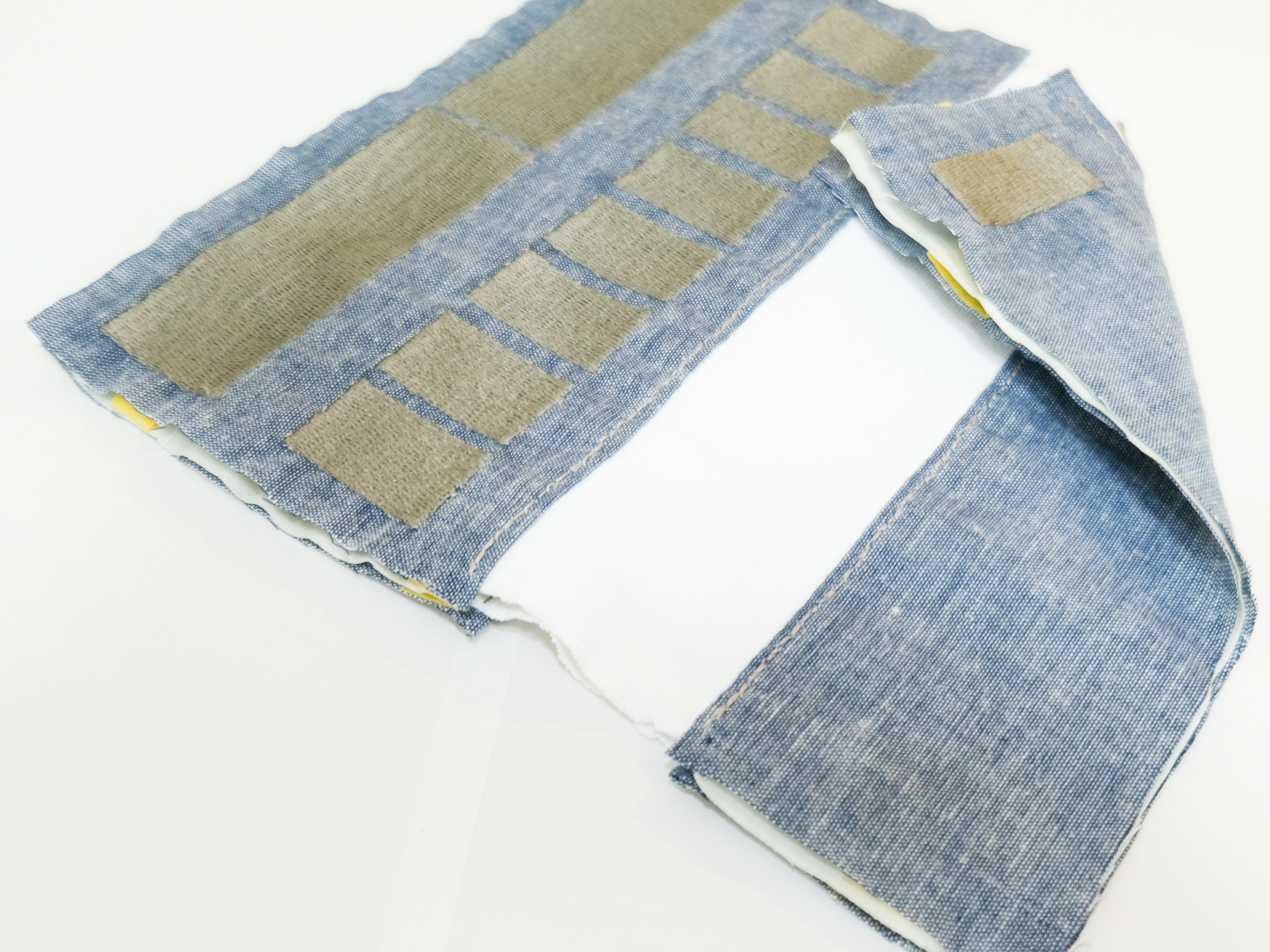Textile-based touch sensing methods for ubiquitous and wearable interfaces employ multiple independent or specific shaped electrodes, leading to limitations on three aspects: design freedom of electrode shape, durability, and simple production. We introduce the creation approach of an embroidery touch sensor by adding embroidery using non-conductive threads on top of an electrode made of conductive threads. Changes of stitch densities of the non-conductive thread embroidery lead to differences in electrical properties, which can be useful to distinguish which part of the embroidery is touched. Our method enables the creation of touch-sensitive embroidery with high design freedom of electrode shape and durability in a simple process.
布製品にインタラクティブな機能を搭載させるために,様々なスマートテキスタイル技術の研究が行われている.これまでの取り組みでは電極の形状を工夫することによってセンシングに対応した電気的特性を作り出しており,既存の衣服が持っているようなデザインの多様性をスマートテキスタイルでは実現できていない.そこで本研究では,導電糸の上に非導電糸で重ね縫いをすることで,タッチ時における静電容量変化を制御し,タッチ位置検出に利用する手法を提案する.非導電糸の密度を変化させることで,タッチ時における指と導電糸の距離が変化して静電容量変化をもたらす.この手法を利用することで,インタラクティブ刺繍を多様なデザインで実現することができる.
Publications






